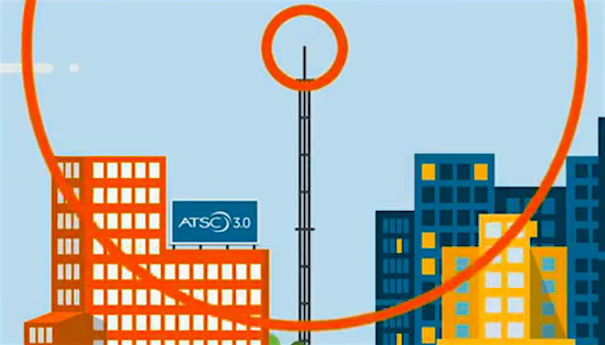FCC Kicks Tires on ATSC 3.0 Transition
That includes whether rule affecting MVPD carriage should sunset next year

The Federal Communications Commission is seeking public and stakeholder input on how TV stations’ transition to the ATSC 3.0 NextGen TV standard is going and whether it should allow two rules to sunset, including one that makes sure MVPDs can receive and retransmit TV station signals being delivered in the new format.
The FCC has just approved a Third Notice of Proposed Rulemaking that asks for that comment.
In addition to wanting to gauge broadcasters’ progress toward “voluntary, market-driven” deployment of the technology, the commission also wants input on whether holders of essential patents for ATSC 3.0 (Sinclair Broadcast Group is a big driver of the technology) are licensing those on reasonable and nondiscriminatory terms (RAND).
ATSC 3.0 allows broadcasters to deliver ultra-HDTV, immersive audio, emergency alerts that could wake up “sleeping” devices, more localized content, targeted advertising, datacasting and more.
Also: NAB Says ATSC 3.0 Will Reinvent Free TV
Among the questions the FCC wants answered are whether broadcasters still see ATSC 3.0 as a rival technology four years into the FCC's authorization. The regulator said "dozens" of stations — of the 1,757 TV stations by the FCC's last count — have adopted ATSC 3.0 so far. The FCC wants to know how many people are actually watching the new signals, how many sets are out there capable of receiving them and if people are using the ATSC 3.0 tuners.
Since MVPDs are not required to carry the signals, though they can if they choose, the FCC wants to know how many are currently carrying them and what the technological challenges are, if any, to doing so. It also wants to get a handle on which, if any, of the advanced features ATSC 3.0 makes possible multichannel video programming distributors (MVPDs), such as cable or satellite TV providers, expect to pass along to their subscribers.
The two rules on which the FCC wants input both sunset in 2023. One is the rule requiring a station’s ATSC 1.0 simulcast of its primary video stream to be substantially similar to the primary stream it is transmitting in ATSC 3.0. The NexGen TV standard is not compatible with current sets, so to minimize disruption the FCC wants to make sure viewers can still receive a primary signal during the transition. Thus, stations must continue to deliver their main signal in ATSC 1.0 for an initial five-year period. (The FCC authorized ATSC 3.0 in November 2017.)
The other rule the FCC wants comment on is one defining the waveforms that broadcasters’ ATSC 3.0 transmissions can take. That was to ensure that device manufacturers didn’t build equipment that doesn’t work and that cable operators and other MVPDs could receive the new TV station signals they carry per must-carry elections or retransmission-consent deals. That rule will expire in March 2023 if not renewed by the FCC. ■
The smarter way to stay on top of broadcasting and cable industry. Sign up below
Contributing editor John Eggerton has been an editor and/or writer on media regulation, legislation and policy for over four decades, including covering the FCC, FTC, Congress, the major media trade associations, and the federal courts. In addition to Multichannel News and Broadcasting + Cable, his work has appeared in Radio World, TV Technology, TV Fax, This Week in Consumer Electronics, Variety and the Encyclopedia Britannica.

